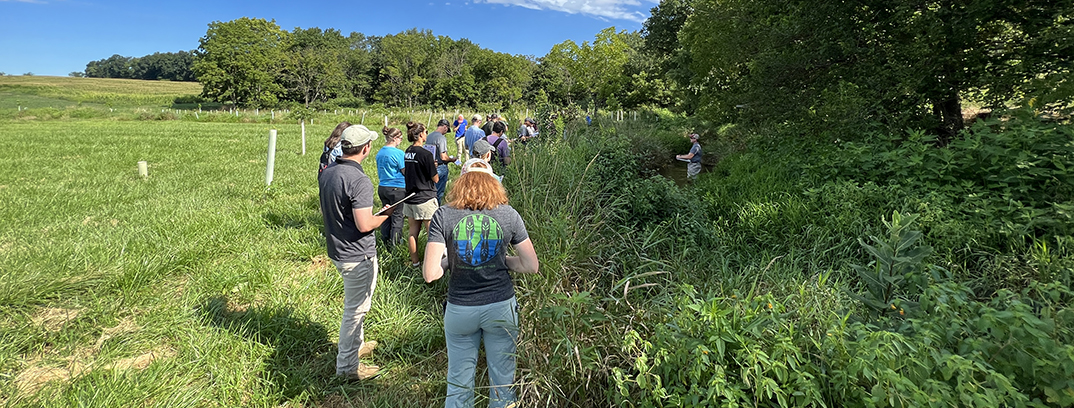What’s in a Name?

Good conservation work has been done on the property of the East Cocalico Township building in Lancaster County, where 265 feet of Stony Run’s steep, nearly vertical banks were regraded, stabilized with matting, and planted with a mixture of native grass and wildflower seeds. Unlike the nearby Muddy Run, whose streambed is rarely, if ever seen through its muddy water, the name Stony Run seems like a bit of a misnomer. Looking into the clear waters of the run, there is no trace of its namesake stones.
“When settlers came here in the 1720’s, they would have seen the streambed lined with large sandstone cobble and small boulders,” said the Township’s MS4 Technician, Ken McCrea. “Then, over centuries of agricultural runoff, the legacy sediment built up and covered the stones.” While the regrading of the streambanks didn’t reveal the stones, it is reducing an estimated 150,000 pounds of sediment runoff each year that would otherwise flow into the Cocalico Creek.
The work was started in May 2021 by the Township Road Crew and was made possible by funding from a Community Conservation Grant through the Lancaster Clean Water Partners and the Lancaster County Community Foundation, funded by the National Fish and Wildlife Foundation. In addition to the bank modifications, the Volunteers from UGI planted trees and shrubs in a 35-foot buffer zone along the stream. Using trees and shrubs provided through the Ten Million Trees project, the Township obtained a variety of species that were planted into the riparian buffer around the project. An additional 35 feet is a wildflower meadow, and the remainder will be planted with trees and shrubs.
Two years later, the hard work has paid off as the streambank is thriving with beebalms, coneflowers, willows, dogwoods and ryegrass, a very welcoming habitat for bees and butterflies.
To learn more about project funding in Lancaster County, visit https://lancastercleanwaterpartners.com/lancaster-clean-water-fund/






















